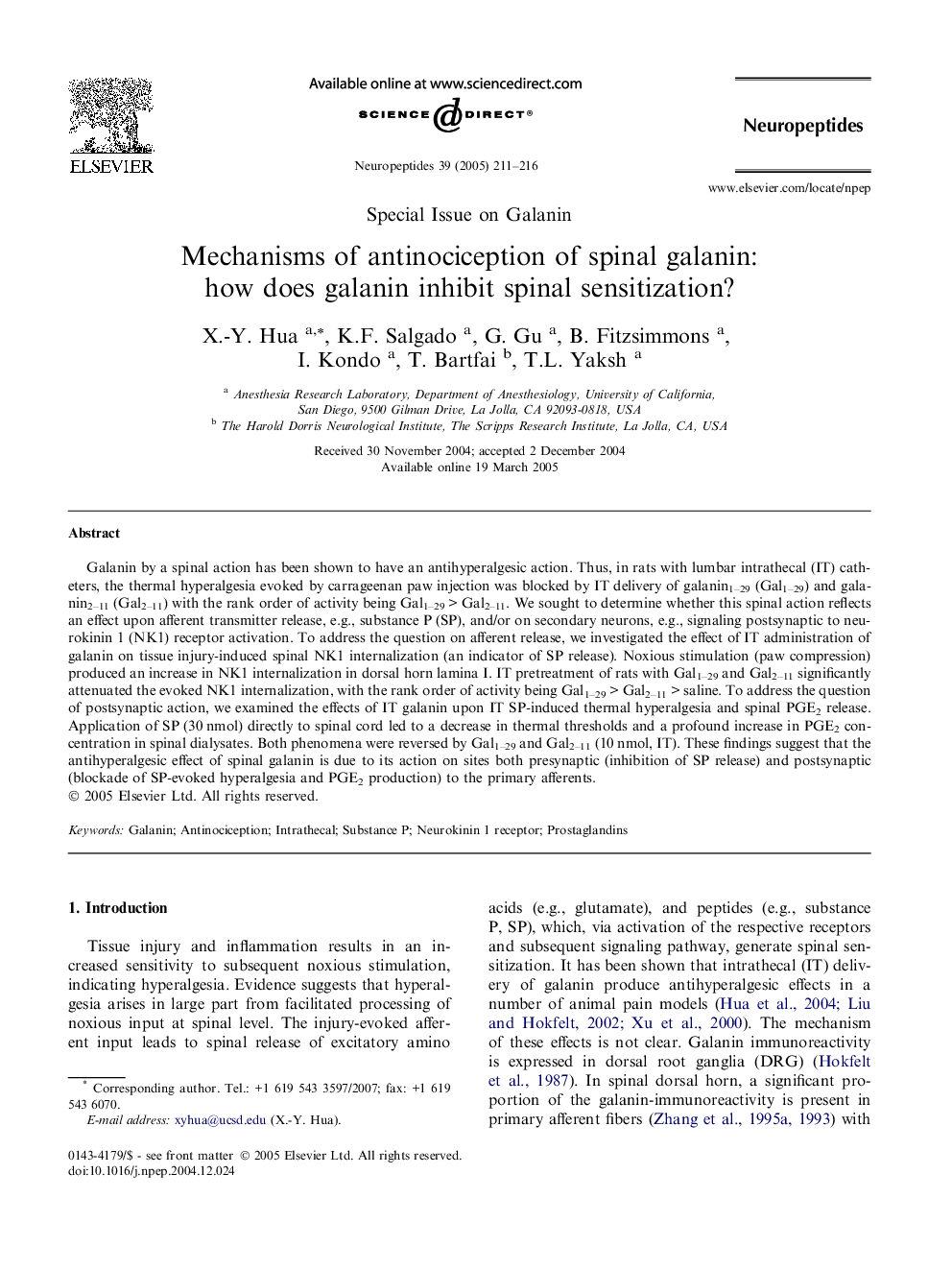| Article ID | Journal | Published Year | Pages | File Type |
|---|---|---|---|---|
| 9118798 | Neuropeptides | 2005 | 6 Pages |
Abstract
Galanin by a spinal action has been shown to have an antihyperalgesic action. Thus, in rats with lumbar intrathecal (IT) catheters, the thermal hyperalgesia evoked by carrageenan paw injection was blocked by IT delivery of galanin1-29 (Gal1-29) and galanin2-11 (Gal2-11) with the rank order of activity being Gal1-29Â >Â Gal2-11. We sought to determine whether this spinal action reflects an effect upon afferent transmitter release, e.g., substance P (SP), and/or on secondary neurons, e.g., signaling postsynaptic to neurokinin 1 (NK1) receptor activation. To address the question on afferent release, we investigated the effect of IT administration of galanin on tissue injury-induced spinal NK1 internalization (an indicator of SP release). Noxious stimulation (paw compression) produced an increase in NK1 internalization in dorsal horn lamina I. IT pretreatment of rats with Gal1-29 and Gal2-11 significantly attenuated the evoked NK1 internalization, with the rank order of activity being Gal1-29Â >Â Gal2-11Â >Â saline. To address the question of postsynaptic action, we examined the effects of IT galanin upon IT SP-induced thermal hyperalgesia and spinal PGE2 release. Application of SP (30Â nmol) directly to spinal cord led to a decrease in thermal thresholds and a profound increase in PGE2 concentration in spinal dialysates. Both phenomena were reversed by Gal1-29 and Gal2-11 (10Â nmol, IT). These findings suggest that the antihyperalgesic effect of spinal galanin is due to its action on sites both presynaptic (inhibition of SP release) and postsynaptic (blockade of SP-evoked hyperalgesia and PGE2 production) to the primary afferents.
Related Topics
Life Sciences
Biochemistry, Genetics and Molecular Biology
Endocrinology
Authors
X.-Y. Hua, K.F. Salgado, G. Gu, B. Fitzsimmons, I. Kondo, T. Bartfai, T.L. Yaksh,
